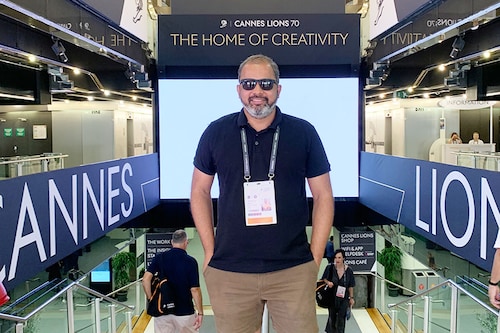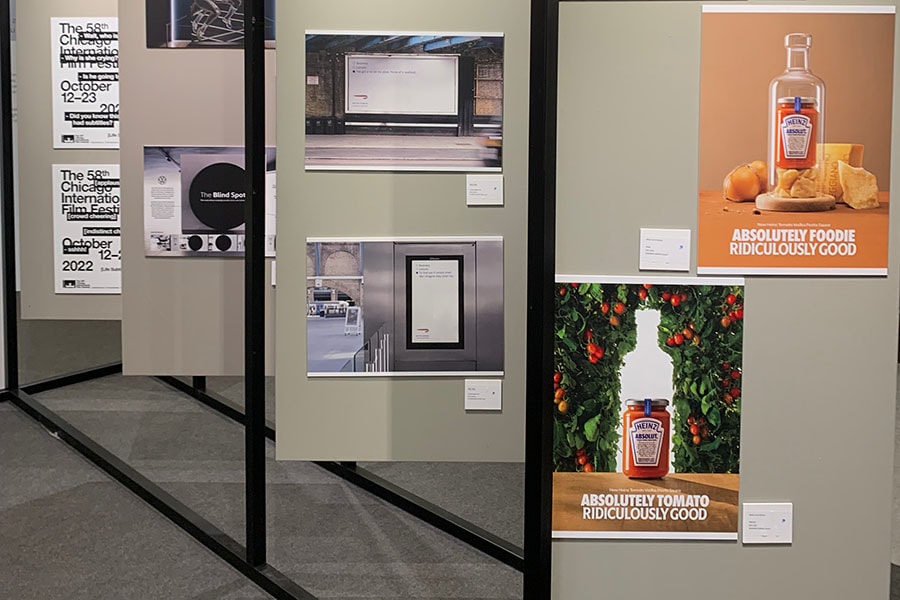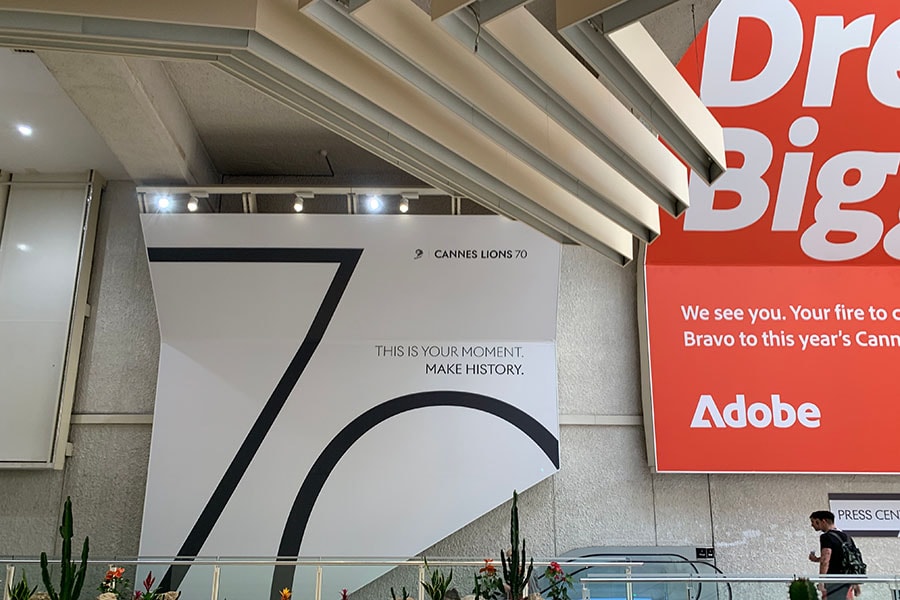Be simple, but be bold: Cannes Lions juror Shekhar Badve
As the Cannes Lions, which recognises excellence in creativity, celebrates its 70th year, Forbes India talks to Shekhar Badve, the only shortlisting juror from India for Design Lions


The creative world is in a tizzy. Cannes Lions is celebrating its 70th year and the who’s who of the advertising and creative communications industries have gathered for the five-day festival. Considered a global benchmark for excellence in creativity and effectiveness, the number of entries for the awards received this year is 26,992, a 6 percent rise from 2022.
Shekhar Badve, the founder director at Lokusdesign, a Pune-based design studio that specialises in branding and strategic design, is one of the 16 jurors from India selected for the process of shortlisting entries. Badve was selected to be a shortlisting juror for the ‘Design Lions’ category. Badve has been part of the India Design Mark jury, the CII"s National Committee on Design, and the Grand Juror at the Afaqs Foxglove & Digies Awards, to name a few. While the design of experience centres and museums is his forte, Lokusdesign has worked on high-end packaging design, branding, and strategic design projects for reputable brands such as Havell’s, ITC, Cadbury"s, and Nestle.
With over 20 years of experience, Badve deliberated over 310 entries in a month to arrive at his shortlist for the Design Lions Awards, which is scheduled for this evening. Forbes India caught up with him to understand what happened behind the scenes. Edited excerpts from the conversation:
Q. How were you selected for the prestigious task of being a juror?
I"ve been very vocal about how design can solve very wicked problems and challenges. Someone I don’t know, who has been following my writings, nominated me, and some other people vouched for it. Post-nomination, I received an email, asking if I would want to be part of the shortlisting jury. It was a definite yes because this is the grandest opportunity there could be. After accepting the offer, I had to submit a very detailed profile. Finally, the names of six shortlisting jurors from across the globe for the Design Lions were arrived at. I would love to go hug the person who nominated me, but I don"t know who it is.
Q. The Design Lions entries cover communication design, digital and interactive design, brand environment and experience design, packaging, and products. What is the process of going through the entries and evaluating them?
So, I went through 310 entries in a month, which is quite something!
There is a fabulous system in place. Even before you begin the judging process, a very detailed training programme is conducted online in which all six jurors participate, along with the jury president, and the jury committee, which helps in coordinating. The judging criteria is spelt out with the help of examples.
Post this training, we start receiving entries online and looking at them, for which the juror has certain data and tools. There are case films, visualisations, very detailed, long-format explanations for the inclusion of an entry and what it has achieved, for the context or for the challenge that they are working to solve, and then, of course, certain numbers. If anything is non-disclosable, they would also mention that. The judging number pad opens only after one has gone through all this information. So, the juror must go through all of this, and only then can they punch in certain numbers.
A committee member is assigned to every juror to track their progress and help them out with technical or contextual issues that they may need to understand, particularly while judging something extremely sensitive. They train you on how to mitigate bias while evaluating an entry, along with creating awareness by indicating or guiding.
 The design shortlist
The design shortlist
Q. Tell us about the entries from India. How did you rate them, especially vis-à -vis the global competition?
If I must put it bluntly, I will say they"re not up to the mark, and for obvious reasons. Most of the design entries came from larger advertising campaigns. This was just an offshoot, so it lacked in terms of design craft, design thinking, or the utilisation of design in terms of solving real-world problems. The diversity of challenges that they were addressing was amazing. While the initial thinking process was amazing, when it came to execution or using design to bring about a change, I found them lacking.
Entries from countries in Africa, South America or eastern Europe, with similar challenges to India’s, were far more fascinating in how they applied design. The finish or output was also fabulous. It"s not about having a unique challenge or a different context. The challenges are similar, like women"s rights, abuse, social stigma, or eco-sensitivity. Entries from small countries in Africa or South America were far more thought-through and impactful, and how they utilised design as a tool for change.
Q. Can you elaborate on the underlying themes?
There were four or five very dominant themes. One was sensitivity towards ecology, nature, or the earth at large. The second theme was women"s rights, equality, discrimination, or health something as simple as menstruation and the taboo against it were handled with very bold, in-your-face design ideas. Third was technology integration, which is whether it"s artificial intelligence or the very latest manufacturing technologies employed in making products or packaging design that is sustainable, plus giving an incredible consumer experience.
The other theme we looked at was consumer or customer experiences. For example, what do you associate football with, beyond Adidas and Puma? To a fan, football means haircuts, T-shirts, probably some music, tattoos, etcetera. One of the entries was that of a retail store that encompassed all these within its premises, saying this is what the world of football means to a football fan.
The fourth theme was about ethnic biases, underrepresented societies, individuals, or communities across the world, and what activation or political activism these brands could do to push the government or authorities to create change or accept certain things. For instance, through one brand campaign, in a particular African country, the senate and the president, who are against having women in parliament when they"re having periods, could change the law to ensure that women have greater representation.
Q. Apart from the official criteria, what filters did you apply to arrive at your shortlist?
Every entry had information related to the number of impressions achieved. But I was also looking at what it has really achieved in terms of people"s ground realities. Numbers can be seen for a month or two. But real effects on the ground have to be seen, and that is what I was trying to see through the entries. Has it done something much more than only give impressions, numbers, likes, and dislikes?
 Cannes Lions, which recognises excellence in creativity, celebrating its 70th year
Cannes Lions, which recognises excellence in creativity, celebrating its 70th year
Q. How can a creative culture be nurtured in times of economic uncertainty?
I believe design works or design outcomes are fantastic when we have constraints. Design is about contradictions, and ways to solve them. So, on one hand, if we have an economic challenge, what is the best way to communicate? I’ll give you an example. There was one publication design, and only one book was printed. And this is about the stories of women who were silenced. So the book is something that you cannot burn physically, so the materials that the publication uses are fire retardant. So, if the challenge is the client not having enough money to do a mass campaign of books and deliver these millions of books across the country, one book is enough. And that is what they did. And then the case film was shot using a flame thrower onto the book. And then the book reveals what these stories are. The kind of impact the book has achieved is phenomenal. So, a law was changed in that country because of that one book. I believe this is the power of design and conviction that we need to have.
Economic constraints have always been there. Has any client ever given us a free hand and said, ‘Oh, go on and splurge’?
I believe keeping these constraints and contradictions in mind is where we designers are educated or have experience in achieving what is seemingly impossible. And after being part of this jury, my conviction has become even stronger. If you must create change, innovation, or possibilities, whether economic or otherwise, this is the time.
Q. What would you say is the importance of design?
I think most creative people give in too quickly, saying that nothing is changing. Let me just surrender and do as the client wants or as the situation demands. Say to that, "No, I"m going to rebel. Let"s not surrender. Let’s co-create with the clients. In these 310 entries, I could see that they were very thoroughly co-created. It does not come across that the client never participated or had very minimal participation. I saw great participation and involvement. So this is a message that I would want to convey to people: Encourage, bulldoze, and bully. Do whatever it takes. Go create, give them hope, and bring them on to the same platform, without which they"re going to sulk and nothing else is going to happen.
Apart from that, get as many stats, dynamics, and numbers to prove to the client why it matters and how it is going to turn out. Most of the creative industry in India shies away from numbers, or they say this is God-given, now take it and just leave. One needs to prove it beyond only the great idea and say how the great idea is going to materialise for them in terms of economics or viability. Show them the path, that this is how it’s going to be.
The third and final message is to be simple but strikingly bold. Simple, because that is what gets across, that is what is understood. But make it so bold that nobody will miss it or ignore it. Nobody will turn a blind eye to this because it is strikingly and impossibly bold. We are simple, but we shy away from being bold. Mahatma Gandhi said, “In a gentle way, you can shake the world."
First Published: Jun 20, 2023, 16:11
Subscribe Now